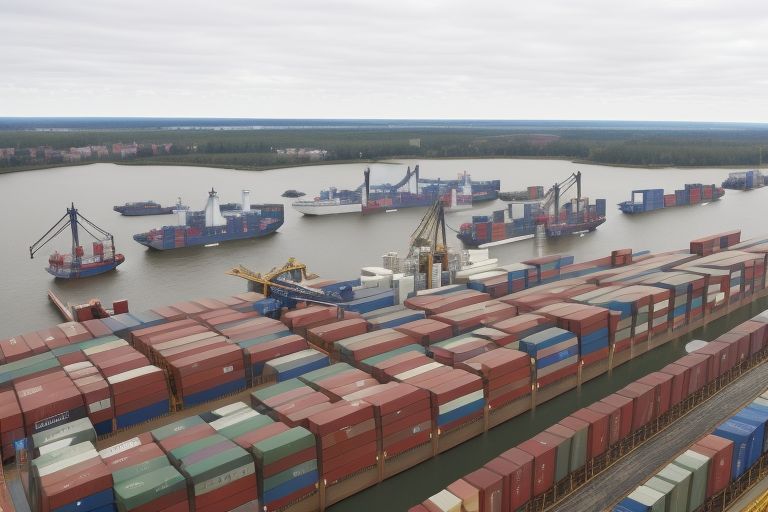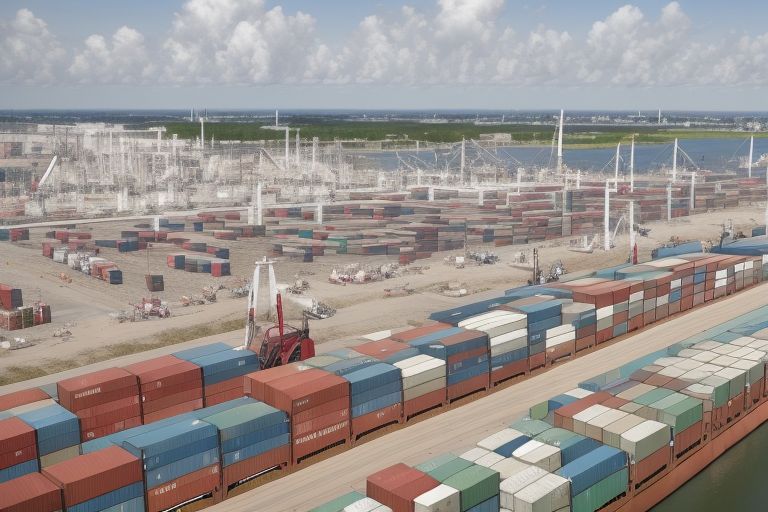Trump tariffs refer to the trade taxes or duties that were imposed by former President Donald Trump’s administration on goods imported into the United States. These tariffs were part of his broader strategy to protect American industries and reduce the trade deficit. While some industries and workers saw them as a necessary measure to shield local businesses, others were concerned about the negative effects on consumers and international trade relationships. In simple terms, these tariffs raised the price of imported goods, which often meant higher prices for American consumers.
Over time, the Trump tariffs became a significant point of discussion in global trade. They sparked a trade war between the U.S. and other countries, such as China, Canada, and the European Union. The goal was to make foreign products more expensive, encouraging people to buy American-made products. However, the impact of Trump tariffs on the U.S. economy is still debated. Some experts argue that it helped certain industries, while others say it harmed American businesses and workers, especially in sectors reliant on affordable imported materials.
Table of Contents
What Are Trump Tariffs and How Do They Affect You

Trump tariffs are taxes or duties imposed on foreign goods entering the United States. These tariffs were part of President Trump’s strategy to protect American businesses and industries. The idea behind the tariffs was to make imported products more expensive, encouraging consumers to buy domestically-produced goods instead. For example, a tariff on Chinese electronics meant that these products would cost more for consumers. While some American manufacturers benefited from less foreign competition, many consumers saw higher prices for everyday items. Small businesses that relied on importing goods faced increased costs, which sometimes led to them raising prices or reducing their workforce. The overall effect of these tariffs continues to be a point of debate in terms of long-term benefits and consequences.
The Impact of Trump Tariffs on U.S. Consumers and Businesses
The Trump tariffs had a mixed impact on both U.S. consumers and businesses. While the intention was to protect American industries, the consequences were far-reaching. For consumers, tariffs meant higher prices on goods like electronics, clothing, and food. Imported goods became more expensive, which led to inflation in some sectors. American businesses, especially those that relied on cheaper imported materials, faced increased production costs. This often resulted in businesses raising prices or finding alternative suppliers, which could negatively affect profit margins. On the other hand, some American companies in industries like steel and manufacturing found themselves benefiting from less competition. However, the overall economic impact remained complicated, with many arguing that the benefits were not as clear as the costs.
Trump Tariffs and the Global Trade War: A Simple Breakdown
The Trump tariffs were part of a larger strategy that sparked a global trade war, particularly with China. A trade war happens when countries impose tariffs on each other in retaliation for similar actions. In this case, the U.S. imposed tariffs on Chinese goods, which led to China also applying tariffs on U.S. products. This back-and-forth created tensions between the two countries and affected global markets. The trade war was not just about tariffs; it involved a series of negotiations and economic measures that influenced trade policies across the world. While the U.S. aimed to reduce its trade deficit and bring jobs back to America, the global trade war disrupted international trade flows and impacted businesses and consumers worldwide.
Trump Tariffs: Pros and Cons for American Industries
Trump tariffs brought both benefits and challenges to American industries. For certain sectors, such as steel and aluminum manufacturing, tariffs helped reduce competition from foreign producers. As a result, American companies in these industries saw increased demand for their products and had the ability to raise prices. However, for other industries, such as technology and retail, tariffs were less beneficial. These sectors often relied on imported materials or finished goods, and the increased cost of tariffs was passed on to consumers. Small businesses that imported goods from countries like China faced higher prices, which hurt their ability to compete. Therefore, the effects of Trump tariffs were not evenly distributed across all American industries.
How Trump Tariffs Changed the U.S.-China Trade Relationship
The relationship between the U.S. and China changed significantly because of the Trump tariffs. Prior to the tariffs, China was a major trading partner of the United States, with a large flow of goods being exchanged between the two countries. However, when Trump imposed tariffs on Chinese products, it led to retaliatory actions from China, including tariffs on American products. This created a tense economic situation, with both countries imposing taxes on each other’s goods. The tariffs changed the way companies did business with China, as many American companies started seeking alternative suppliers to avoid the added costs. The trade war between the U.S. and China also led to negotiations, with some tariffs being reduced after trade deals were signed.
What You Need to Know About Trump Tariffs and Your Daily Shopping
Trump tariffs had a direct effect on what consumers paid for everyday products. Imported items, like electronics, clothing, and home goods, became more expensive because of the tariffs. If a store sold products made in countries targeted by the tariffs, such as China, those products likely saw price increases. This meant that shoppers were paying more for goods they once bought at lower prices. While some people may have supported the tariffs for their potential to protect American jobs, the reality was that these tariffs often made things like smartphones and clothing more expensive. For many people, it meant having to adjust their budgets or buy fewer imported goods.
The Future of Trump Tariffs: What’s Next for Global Trade
The future of Trump tariffs remains uncertain as trade policies continue to evolve. Although some of the tariffs imposed during Trump’s presidency have been reduced or eliminated, others are still in place, especially in sectors like steel and aluminum. The Biden administration has reviewed some of these tariffs, but it has also chosen to keep some intact. The global trade environment continues to change, with rising tensions and new trade agreements shaping the future of international commerce. The outcome of ongoing negotiations and trade discussions will determine whether these tariffs remain in place, are expanded, or are eventually removed. The impact of future tariffs will depend on how countries balance their own interests and the global economy.
Trump Tariffs on Chinese Goods: How They Impact Prices

Trump tariffs on Chinese goods had a clear effect on the prices of products in the United States. Many everyday items, from electronics to clothing, saw price increases due to the tariffs. Companies that imported goods from China had to pay higher costs, which they then passed on to consumers in the form of higher prices. The U.S. government aimed to use these tariffs to pressure China into changing its trade practices, but for consumers, it meant paying more at checkout. For example, smartphones and computers manufactured in China became significantly more expensive. This increase in prices was felt across a variety of industries, and it led many to reconsider their purchasing habits and look for alternatives.
The Real Cost of Trump Tariffs: Who Wins and Who Loses
The real cost of Trump tariffs is complicated, with both winners and losers. On one hand, some U.S. industries, such as steel manufacturers, benefited from less competition abroad. The tariffs helped protect these industries and allowed them to raise prices, which increased their profits. On the other hand, U.S. consumers, who faced higher prices for many products, lost out. Companies that relied on cheap imported goods had to raise their prices, which led to higher costs for everyday items. Small businesses were especially hit hard, as they struggled to maintain profit margins in the face of rising import costs. Therefore, while some industries gained, the broader economy and consumers often paid the price.
How the U.S. Economy Adjusted to Trump Tariffs: A Beginner’s Guide
The U.S. economy made several adjustments in response to Trump tariffs. The tariffs were designed to reduce the trade deficit and protect American industries, but the results were mixed. Some sectors, like steel manufacturing, found new opportunities as competition from abroad decreased. However, other industries faced challenges, particularly those that relied on foreign products or raw materials. The increased cost of imports meant higher prices for goods, which affected both consumers and businesses. Despite the challenges, the U.S. economy adjusted by finding new trade partners and adjusting production processes. While the long-term impact of the tariffs is still being debated, it’s clear that the economy had to adapt in a number of ways.
Conclusion:
In conclusion, Trump tariffs have had a big impact on the U.S. economy. While they were meant to help American businesses by making foreign products more expensive, the results were mixed. Some industries did benefit, but many consumers had to pay higher prices for everyday items. The effects of these tariffs are still being discussed, and it will take time to understand the full impact. Whether you supported the tariffs or not, it’s clear they played a significant role in shaping trade between the U.S. and other countries.
As the world moves forward, the future of Trump tariffs remains uncertain. Some of the tariffs are still in place, while others have been adjusted or removed. The changing global trade environment means that new policies could emerge, and the situation may continue to evolve. It’s important to keep an eye on how these changes affect prices and businesses in the U.S., so consumers can make informed decisions in the future.
FAQs:
Q: What are Trump tariffs?
A: Trump tariffs are taxes on imported goods that were introduced by former President Donald Trump to protect U.S. businesses.
Q: How did Trump tariffs affect prices?
A: Trump tariffs made many imported products more expensive, which led to higher prices for consumers in the U.S.
Q: Did Trump tariffs help U.S. businesses?
A: Some U.S. businesses, like steel manufacturers, benefitted from less competition, while others faced higher costs.
Q: What is a trade war?
A: A trade war happens when countries put tariffs on each other’s goods, like the U.S. and China did during Trump’s presidency.
Q: Are Trump tariffs still in place?
A: Some Trump tariffs are still in effect, but others have been reduced or removed under the current U.S. administration.



